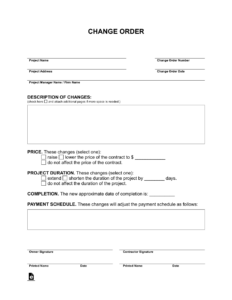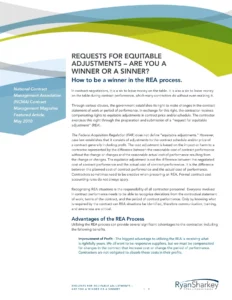Utilizing a standardized form promotes transparency and minimizes disputes arising from project changes. It facilitates effective communication by providing a structured format for outlining the change, its impact, and the associated costs. This meticulous documentation protects all stakeholders by ensuring agreement and accountability throughout the project lifecycle, leading to better budget control and predictable outcomes.
This article will explore the key components of these forms, best practices for their implementation, and strategies for effective change management in construction projects.
Key Components of a Construction Change Order Request
Effective change management hinges on well-structured documentation. A comprehensive form typically includes the following crucial elements:
1: Project Identification: Clear identification of the project, including the project name, contract number, and relevant dates is essential for proper tracking and referencing.
2: Change Order Number: A unique sequential number assigned to each change order allows for easy identification and organized record-keeping.
3: Description of Change: A detailed and unambiguous description of the proposed modification to the project scope, including specific materials, labor, and equipment affected by the change.
4: Justification for Change: A clear explanation of the reasons necessitating the change, whether due to unforeseen site conditions, design errors, or client requests.
5: Impact on Schedule: An assessment of the impact on the project timeline, including any adjustments to key milestones or completion dates.
6: Cost Breakdown: A detailed breakdown of the cost implications of the change, including labor, materials, equipment, and any associated overhead or profit adjustments. Supporting documentation, such as quotes from subcontractors, may be required.
7: Signatures and Approvals: Designated spaces for signatures from all relevant parties, including the client, contractor, and any involved consultants, signify agreement and authorization to proceed with the change.
8: Supporting Documentation: Relevant attachments such as drawings, specifications, or photographs can provide further clarification and support the justification for the change.
These elements ensure transparency, accountability, and facilitate informed decision-making throughout the change management process, leading to smoother project execution.
How to Create a Construction Change Order Request Template
Creating a standardized template ensures consistency and efficiency in managing project modifications. A well-designed template streamlines the process and minimizes potential disputes.
1: Establish Clear Project Identification Fields: Include fields for the project name, contract number, and relevant dates. This ensures accurate tracking and association with the correct project.
2: Incorporate a Unique Change Order Numbering System: Implement a sequential numbering system for easy identification and organized record-keeping. This simplifies tracking and referencing specific changes.
3: Define a Detailed Change Description Section: Provide ample space for a comprehensive description of the proposed modification. This should clearly outline the scope of the change and its impact on the project.
4: Include a Justification Section: Mandate a clear explanation of the reasons necessitating the change. This ensures transparency and facilitates understanding among stakeholders.
5: Incorporate Schedule Impact Assessment: Include sections to document the impact on the project timeline. This allows for proactive adjustments to schedules and milestones.
6: Develop a Comprehensive Cost Breakdown Section: Create a structured format for detailing the cost implications, including labor, materials, and equipment. Provision for supporting documentation, such as subcontractor quotes, strengthens cost justification.
7: Designate Signature and Approval Lines: Include designated spaces for signatures from all involved parties, indicating agreement and authorization. This formalizes the approval process and establishes accountability.
8: Provide Space for Supporting Documentation: Incorporate a section for attaching relevant documents, such as drawings, specifications, and photographs. This provides further context and substantiates the change request.
A well-designed template, incorporating these elements, facilitates clear communication, minimizes ambiguity, and promotes effective change management throughout the project lifecycle.
Standardized forms are essential for effective construction project management. They provide a structured framework for documenting modifications, ensuring transparency, and mitigating potential disputes. Key components such as clear project identification, detailed change descriptions, cost breakdowns, and designated approval lines contribute to a comprehensive record of project alterations. Well-defined processes for creating and implementing these forms are crucial for maintaining project control, facilitating communication among stakeholders, and ensuring successful project delivery.
Proactive implementation of robust change management processes, supported by well-designed templates, contributes significantly to predictable project outcomes and minimizes costly disputes. Embracing these practices strengthens contractual relationships, improves financial control, and ultimately fosters successful project completion. The diligent use of these tools reflects a commitment to professionalism and best practices within the construction industry.

